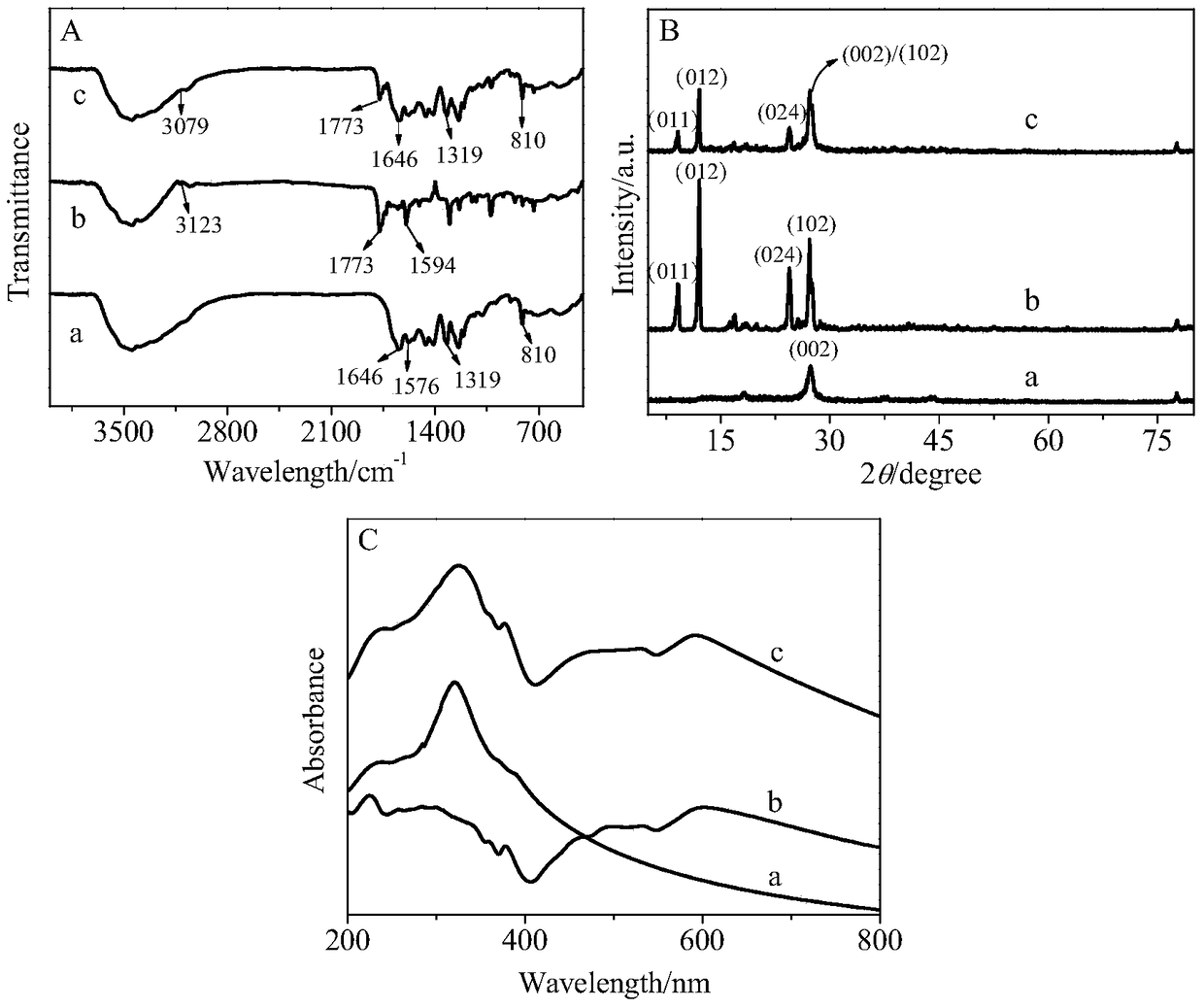An enzyme-free ECL glucose sensor
A technology of glucose sensor and g-c3n4, which is applied in the field of enzyme-free ECL glucose sensor to achieve the effect of high selectivity, weakened hindering effect and sensitive detection
- Summary
- Abstract
- Description
- Claims
- Application Information
AI Technical Summary
Problems solved by technology
Method used
Image
Examples
Embodiment 1
[0061] 1. Preparation of g-C 3 N 4 Nanosheets
[0062] Take 20g of melamine powder in a ceramic crucible, cover it, heat up to 600°C at a heating rate of 3°C / min, calcinate for 2 hours, and cool naturally to room temperature to obtain a yellow block g-C 3 N 4 powder. Take 250mg block g-C 3 N 4 The powder was dispersed in 250mL water and ultrasonicated for 10h. Centrifuge the obtained suspension at a rate of 5000rpm for 5min to remove the unpeeled chunks of g-C 3 N 4 powder. The supernatant was dried to obtain g-C 3 N 4 Nanosheets.
[0063] 2. Preparation of sensors
[0064] Glassy carbon electrodes (GCE, Φ=4mm) were respectively treated with 0.3 and 0.05 μm Al 2 o 3 After powder polishing, it was cleaned ultrasonically in distilled water, ethanol and double distilled water, and left to dry at room temperature. 1mg g-C 3 N 4 Nanosheets and 1mg PTCA were dispersed in 2mL water and sonicated for 8 hours to obtain pink g-C 3 N 4 - Dispersions of PTCA nanocomposi...
Embodiment 2
[0106] 1. Preparation of g-C 3 N 4 Nanosheets
[0107] Take 20g of melamine powder in a ceramic crucible, cover it, heat up to 595°C at a heating rate of 2.5°C / min, calcinate for 2.5h, and cool naturally to room temperature to form a yellow block g-C 3 N 4 powder. Take 250mg block g-C 3 N 4 The powder was dispersed in 250mL water and ultrasonicated for 9.5h. Centrifuge the obtained suspension at a rate of 4900rpm for 8min to remove the unpeeled chunks of g-C 3 N 4 powder. The supernatant was dried to obtain g-C3 N 4 Nanosheets.
[0108] 2. Preparation of sensors
[0109] Glassy carbon electrodes (GCE, Φ=4mm) were respectively treated with 0.3 and 0.05 μm Al 2 o 3 After powder polishing, it was cleaned ultrasonically in distilled water, ethanol and double distilled water, and left to dry at room temperature. 1mg g-C 3 N 4 Nanosheets and 0.9mg PTCA were dispersed in 1.995mL water, sonicated for 7 hours to obtain pink g-C 3 N 4 - Dispersions of PTCA nanocomposit...
Embodiment 3
[0119] 1. Preparation of g-C 3 N 4 Nanosheets
[0120] Take 20g of melamine powder in a ceramic crucible, cover it, heat up to 605°C at a heating rate of 3.5°C / min, calcinate for 1.5h, and cool naturally to room temperature to form a yellow block g-C 3 N 4 powder. Take 250mg block g-C 3 N 4 The powder was dispersed in 250mL water and ultrasonicated for 10.5h. Centrifuge the obtained suspension at a rate of 5200rpm for 4min to remove the lumps of g-C that have not yet peeled off 3 N 4 powder. The supernatant was dried to obtain g-C 3 N 4 Nanosheets.
[0121] 2. Preparation of sensors
[0122] Glassy carbon electrodes (GCE, Φ=4mm) were respectively treated with 0.3 and 0.05 μm Al 2 o 3 After powder polishing, it was cleaned ultrasonically in distilled water, ethanol and double distilled water, and left to dry at room temperature. 1mg g-C 3 N 4 Nanosheets and 1.1mg PTCA were dispersed in 1.995mL water, sonicated for 9h to obtain pink g-C 3 N 4 - Dispersions of ...
PUM
| Property | Measurement | Unit |
|---|---|---|
| diameter | aaaaa | aaaaa |
Abstract
Description
Claims
Application Information
 Login to View More
Login to View More - R&D
- Intellectual Property
- Life Sciences
- Materials
- Tech Scout
- Unparalleled Data Quality
- Higher Quality Content
- 60% Fewer Hallucinations
Browse by: Latest US Patents, China's latest patents, Technical Efficacy Thesaurus, Application Domain, Technology Topic, Popular Technical Reports.
© 2025 PatSnap. All rights reserved.Legal|Privacy policy|Modern Slavery Act Transparency Statement|Sitemap|About US| Contact US: help@patsnap.com



